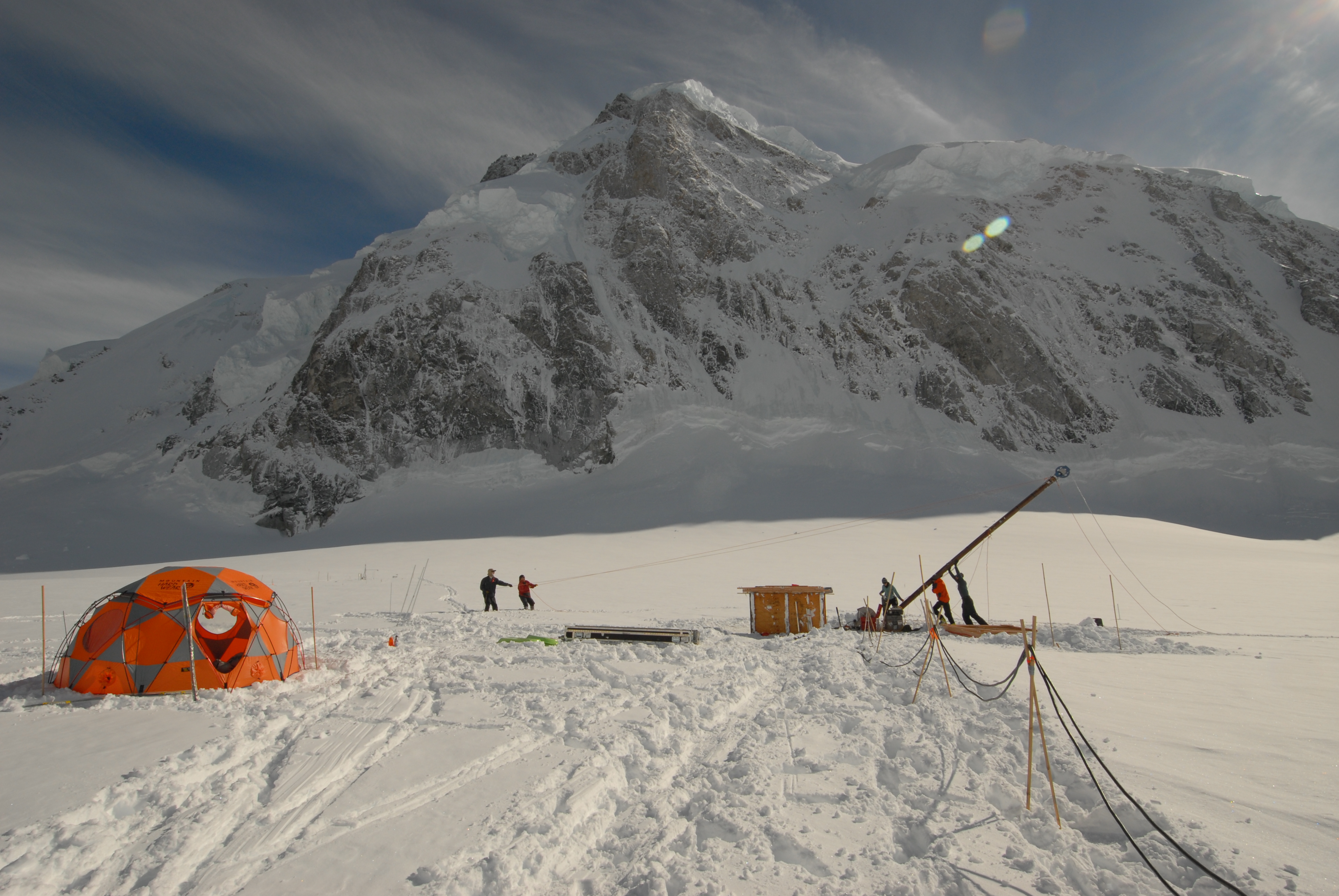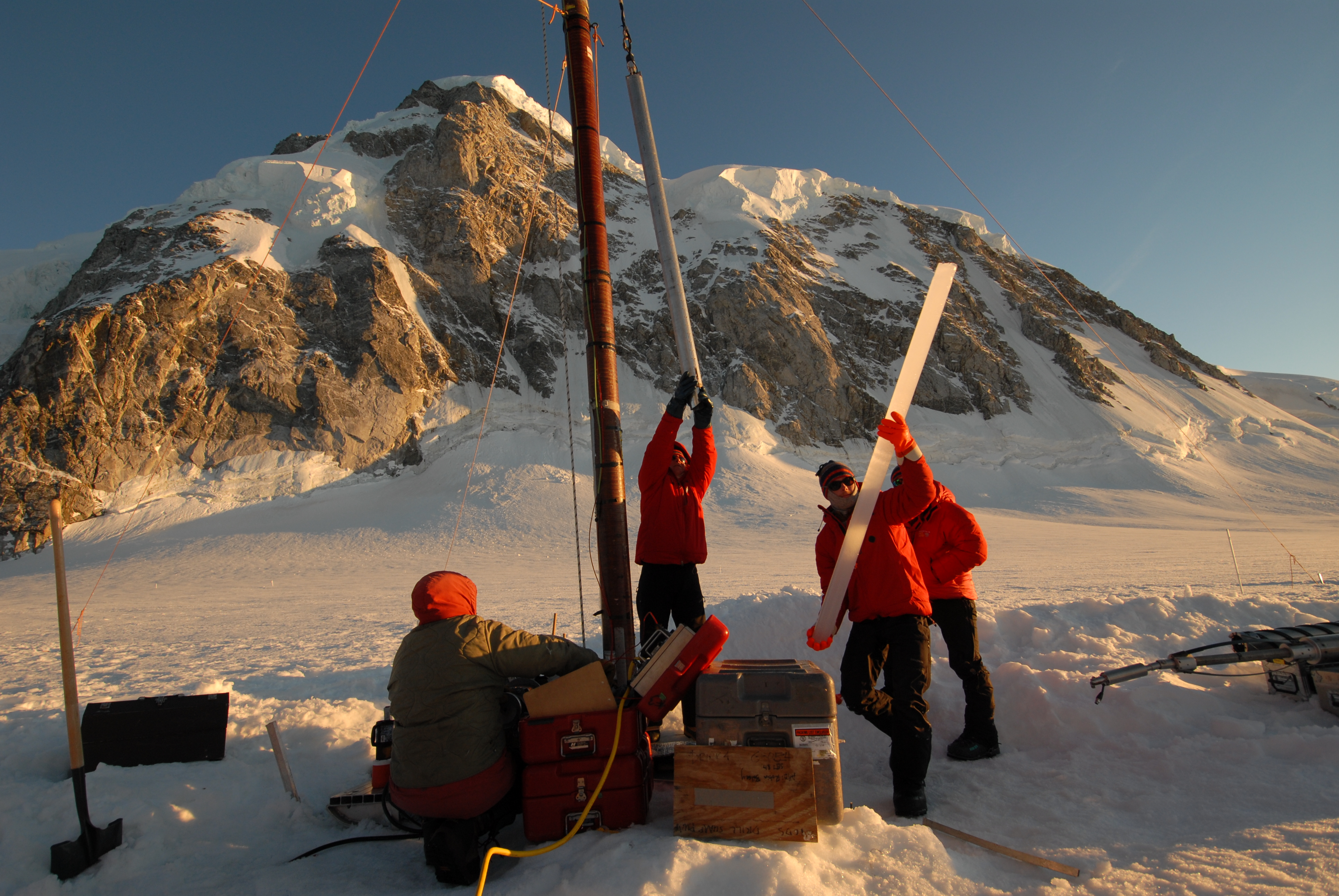
IN JULY OF 2010, a team led by Peter Neff and Eric Steig from the University of Washington and Doug Clark from Western Washington University spent 26 days retrieving ice cores at Combatant Col, near Mt. Waddington, British Columbia, Canada (51.39°N, 125.22°W). Mt. Waddington, at 4019 meters (13,186 feet), is the highest massif entirely within British Columbia and is one of very few sites in North America which has demonstrated potential for obtaining an ice core paleoclimate record so far south of 60° North latitude. The goal of this project is to develop a record of annual snow accumulation for the last 200-500 years. Such a record may provide insight into how climate in the North Pacific region has varied in the past, extending understanding beyond that gained from short instrumental records in the region.
Beth Bergeron (Ice Drilling Design and Operations) led the operation of 4-inch electromechanical and 3-inch thermal drills, reaching a maximum depth of approximately 140 meters at the initial borehole before difficulties, resulting from glacial meltwater filling the borehole, halted drilling. A second borehole reached 90 meters depth. GPS surveys conducted in previous years and a high-resolution ground penetrating radar grid surveyed in late May 2010 indicate an ice depth of 250 to 300 meters. In addition to these new cores, work completed in 2006 yielded 65 meters of ice and demonstrated preservation of annual stratigraphy regardless of summer melt at Combatant Col (elevation 3000 meters, ~10,000 feet).

Despite drilling little more than halfway to bedrock, the field season was very successful. The ice core collected is sufficiently long enough to examine the relationship of snow accumulation at Combatant Col to instrumental records of climate. The core field crew of five spent nearly one month on the ice, waiting out day-long windstorms, shaking off the loss of three larger communal tents, dodging at least one significant avalanche, and enjoying the company of up to five other researchers at any one time during the season. Constant radio contact was maintained with the King family of White Saddle Air, whose helicopter support and able assistance proved essential in the safe and efficient execution of the major field component of this project.
Work developing this new ice core record is ongoing, as detailed visual and chemical records must be produced to develop a reliable annual chronology for the core. Lab technicians at the Desert Research Institute will develop the geochemical record from the core, the National Ice Core Laboratory supports digital imaging work to identify summertime melt layers, and water isotopes will be analyzed throughout the length of the core by students and technicians at the University of Washington. Under the guidance of Erin Pettit, undergraduate students at the University of Alaska, Fairbanks are examining meteorological, geophysical, and snowpit data with support from an NSF Research Experience for Undergraduates grant.
